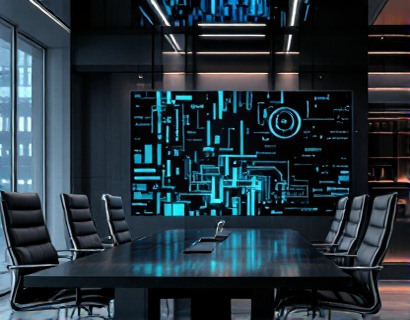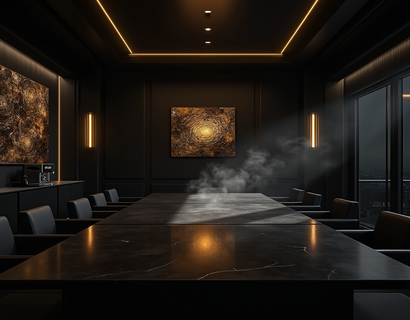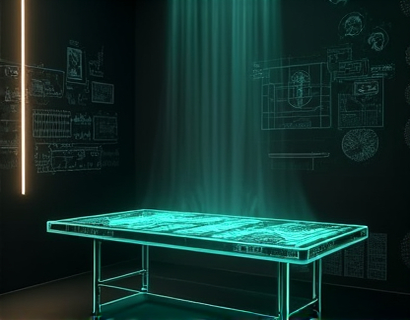Maximizing Architecture Firm Efficiency with Advanced Software Solutions
In the competitive landscape of architecture firms, efficiency and productivity are paramount. Advanced software solutions play a crucial role in streamlining internal processes and enhancing user experience, allowing architects to concentrate on their creative excellence. This article delves into the various ways technology can optimize project management, resource allocation, and client interactions, ultimately leading to improved productivity and collaboration within architecture firms.
Streamlining Project Management
Effective project management is the backbone of any successful architecture firm. Advanced software solutions offer robust tools that simplify the planning, execution, and monitoring of projects. These platforms provide centralized dashboards where project managers can track progress in real-time, assign tasks, set deadlines, and manage budgets. By automating routine tasks such as report generation and status updates, these tools reduce the administrative burden on team members, allowing them to focus on more critical aspects of the project.
One key feature of these software solutions is the ability to integrate with other tools and systems used within the firm. For instance, integration with CAD software ensures that design changes are automatically reflected in the project management system, reducing the risk of errors and miscommunications. This seamless integration enhances the overall efficiency of the project lifecycle, from initial concept to final delivery.
Optimizing Resource Allocation
Efficient resource allocation is essential for maximizing the productivity of an architecture firm. Advanced software solutions provide powerful resource management tools that help firms allocate their human and material resources more effectively. These tools enable managers to visualize resource availability, track workloads, and predict potential bottlenecks.
By leveraging data analytics, these platforms can offer insights into resource utilization patterns, helping firms make informed decisions about staffing and equipment allocation. For example, a software solution might highlight that certain team members are consistently overburdened during specific phases of the project, allowing managers to redistribute tasks more evenly. This not only improves overall efficiency but also enhances job satisfaction and reduces burnout among team members.
Enhancing Client Interactions
Client satisfaction is a critical factor in the success of any architecture firm. Advanced software solutions can significantly enhance client interactions by providing tools for better communication, collaboration, and project visualization. Virtual reality (VR) and augmented reality (AR) integrations, for instance, allow clients to experience designs in a more immersive and interactive way, leading to clearer understanding and faster decision-making.
Project portals and collaborative platforms built into these software solutions enable clients to access project updates, documents, and communication in one centralized location. This transparency builds trust and ensures that clients feel involved throughout the project lifecycle. Additionally, these platforms often include features for collecting and managing client feedback, which can be invaluable for continuous improvement and building long-term relationships.
Improving Internal Collaboration
Collaboration among team members is vital for the success of complex architectural projects. Advanced software solutions foster a collaborative environment by providing tools that facilitate communication, document sharing, and real-time editing. Cloud-based platforms ensure that all team members have access to the most up-to-date information, regardless of their location.
Version control is another critical aspect of internal collaboration. These software solutions track changes to documents and designs, allowing team members to see the evolution of a project and revert to previous versions if necessary. This not only prevents confusion but also ensures that everyone is working with the latest information, reducing errors and rework.
Boosting Productivity through Automation
Automation is a key driver of productivity gains in architecture firms. Advanced software solutions can automate a wide range of tasks, from routine data entry to complex workflows. For example, automated workflows can trigger specific actions based on predefined conditions, such as sending notifications when a task is completed or when a deadline is approaching.
Another area where automation shines is in the management of repetitive tasks, such as generating standard reports or creating initial design templates. By automating these tasks, team members can focus on more value-added activities that require their expertise and creativity. This shift not only increases efficiency but also enhances job satisfaction by allowing professionals to engage in more meaningful work.
Data-Driven Decision Making
Access to accurate and timely data is crucial for making informed decisions in the architecture industry. Advanced software solutions provide comprehensive analytics and reporting tools that help firms gain insights into various aspects of their operations. These insights can range from project performance metrics to financial KPIs and resource utilization rates.
Data visualization features, such as dashboards and charts, make it easier for managers to interpret complex data and identify trends. This data-driven approach enables firms to make strategic decisions that optimize operations, reduce costs, and enhance overall performance. For instance, analyzing project data can reveal patterns in delays or cost overruns, allowing managers to implement corrective measures proactively.
Enhancing User Experience
The user experience (UX) of software solutions is a critical factor in their adoption and effectiveness. Advanced architecture software is designed with the end-user in mind, ensuring that tools are intuitive, user-friendly, and tailored to the specific needs of architects and project managers. A positive UX not only improves productivity but also increases user satisfaction and reduces the learning curve associated with new technologies.
Features such as customizable interfaces, context-sensitive help, and guided workflows contribute to a seamless user experience. Additionally, regular updates and feedback loops with users help software providers refine and enhance their products, ensuring they remain relevant and effective in a rapidly evolving industry.
Conclusion
In conclusion, advanced software solutions offer architecture firms a comprehensive set of tools to streamline internal processes, enhance user experience, and ultimately maximize efficiency. By leveraging these technologies, firms can focus more on creative excellence while ensuring project success, resource optimization, and client satisfaction. As the industry continues to evolve, embracing innovative software solutions will be essential for staying competitive and achieving long-term success.










































